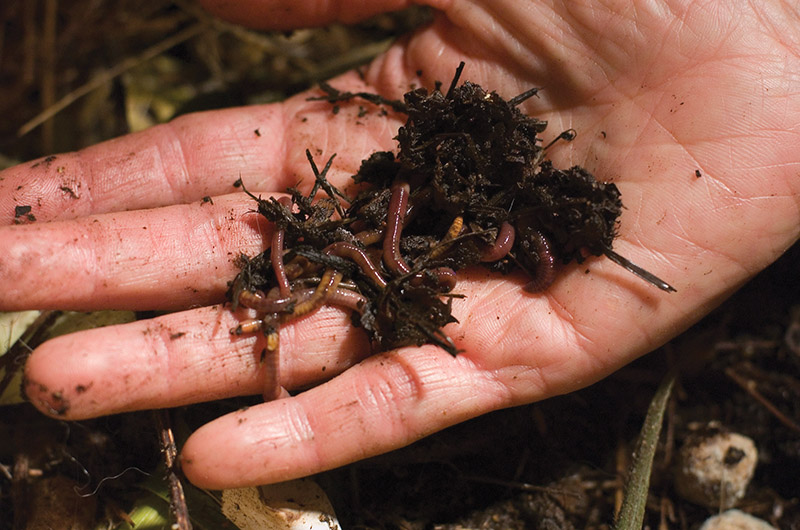Some Of Where To Find Red Wigglers
Table of ContentsSome Known Facts About Where To Find Red Wigglers.Indicators on Where To Find Red Wigglers You Need To KnowThe Greatest Guide To Where To Find Red WigglersThe smart Trick of Where To Find Red Wigglers That Nobody is DiscussingExcitement About Where To Find Red WigglersWhere To Find Red Wigglers for Dummies
For best outcomes, you desire to shoot for regarding 60-70% wetness degree. At the excellent wetness degrees which is simply under 70% that handful need to hardly yield one drop of fluid.
The Indian Blue is ravenous, but additionally prefers a warmer climate and it likewise exhibits a propensity to leave the bin. The red wiggler is a durable worm and isn't as picky regarding its climate. I such as to call it the Ford Taurus of vermicomposting worms; you will not brag to your hardcore composting pals that you possess them, however they will serve you well.
Like any various other bait, a worm's effectiveness has actually concerned depend on its discussion. H.G. "Faucet" Tapply highlighted this point virtually a half century earlier in one of his Field & Stream columns. "A worm is such an unformed animal," he created, "there doesn't seem to be significantly an angler can do with it except stab it on a hook and throw it right into the water." Yet as Tap showed, a fishermen can do a bargain to make a worm extra attractive.
Our Where To Find Red Wigglers Diaries
I assume you will too if you try them. The smaller the trout stream, the far better worms work is an axiom that hasn't transformed in the 100-plus years because Perry composed his article. Anglers of his period merely stuck their rickety fishing pole with alder tangles and dropped a heavy worm into a deep opening.
Early morning is prime feeding time, and the lightweight lure's sluggish descent leaves 5 inches of wriggling healthy protein in complete view for rather a while. After you have actually made the actors, keep the bond open and put the pole in a forked stick. The line will diminish the rod in sluggish loopholes as the worm settles, however generally the sluggish loopholes will become a blur, and the morning will instantly get rather intriguing.
I usually use a whole 'spider, choose marabou clothing, and drop the rod for two or three secs when I obtain a hit.
If it's there, established the hook with a sweep instead than a jerk. When in a while you'll find yourself hooked to those sluggish, passionate yanks, and really feel the weight of a great walleye.
The Ultimate Guide To Where To Find Red Wigglers
When the hefty walleyes proceed to the big-water shoals in the late summertime, attempt pursuing them with a bucktail jig and a 1-inch pinch of nightcrawler. The bait covers the hook factor, deflects weeds, and uses a taste of victim. With absolutely nothing dangling or flapping, it continues to be secure despite current, casts, or enthusiastic panfish.
Whether you're wading or fishing from a watercraft, wandering worms is one of the wonderful searching methods for larger rivers. For trout, a spade-dug, 4-inch yard worm is the right size; for bass, walleyes, and steelhead, a nightcrawler may be a better option. The trick is to wander the bait with feeding and holding areas due to the fact that fish in current are not going to chase down the bait, as they may in still water.
Fish the shifts: mouths of tributaries, bank-side slicks, and the sides of huge swimming pools. His motto applies to any type of number of angling maneuvers, including the matter of including an item of worm to a wet fly.

Not known Incorrect Statements About Where To Find Red Wigglers
Include a few hundred worms and feed them two times a week. Maintain the bed linens damp however not wet. On the menu: lettuce, fruit and vegetable waste, and the occasional nongreasy surplus.
Similar to veggie scraps, you can take your utilized coffee premises and add them to a worm box. Worms love eating coffee grounds. With the appropriate problems and moist, healthy dirt, worms can reside in a pail of dirt for around 3 weeks. Shop out of straight sunshine and keep at a temperature in see this between 50 and 80 degrees.
When the hefty walleyes relocate on to the big-water shoals in the late summer, try going after them with a bucktail jig and a 1-inch pinch of nightcrawler. The lure covers the hook factor, disperses weeds, and offers a preference of victim. With nothing dangling or flapping, it remains safe and secure no matter of current, casts, or ambitious panfish.
Where To Find Red Wigglers Can Be Fun For Anyone
Whether you're wading or learn the facts here now angling from a boat, drifting worms is just one of the great browsing approaches for bigger rivers. Where To Find Red Wigglers. For trout, a spade-dug, 4-inch yard worm is the appropriate dimension; for bass, walleyes, and steelhead, a nightcrawler may be a better selection. The secret is to drift the lure with feeding and holding areas because fish in current are not mosting likely to go after down the lure, as they may in still water
Fish the shifts: mouths of tributaries, bank-side slicks, and the edges of big pools. His adage applies to any kind of number of angling maneuvers, including the issue of including an item of worm to a wet fly.
Elevating your own lure indicates you can slide out of the residence and hit the fish pond before Mama comes homejust like in the old days. Here's just how to keep a worm box: Cut a sheet of CDX-grade plywood, which is made with water-resistant glues, to your measurements. Accomplish with each other and drill a dozen 12-inch holes in the base for water drainage.
Where To Find Red Wigglers Things To Know Before You Get This
Fill it with shredded newspaper, leaves, peat moss, and soil. Moisten lightly. Cover and allow rest for a week. Include a few hundred worms and More hints feed them two times a week. Keep the bed linen moist however not wet. On the food selection: lettuce, fruit and vegetable waste, and the occasional nongreasy extra.
Much like veggie scraps, you can take your utilized coffee premises and include them to a worm box. Worms enjoy eating coffee grounds. With the right conditions and wet, healthy and balanced dirt, worms can stay in a bucket of dirt for around three weeks. Store out of direct sunlight and maintain a temperature in between 50 and 80 degrees.
 Tahj Mowry Then & Now!
Tahj Mowry Then & Now! Heath Ledger Then & Now!
Heath Ledger Then & Now! Robbie Rist Then & Now!
Robbie Rist Then & Now! Bo Derek Then & Now!
Bo Derek Then & Now! Jane Carrey Then & Now!
Jane Carrey Then & Now!